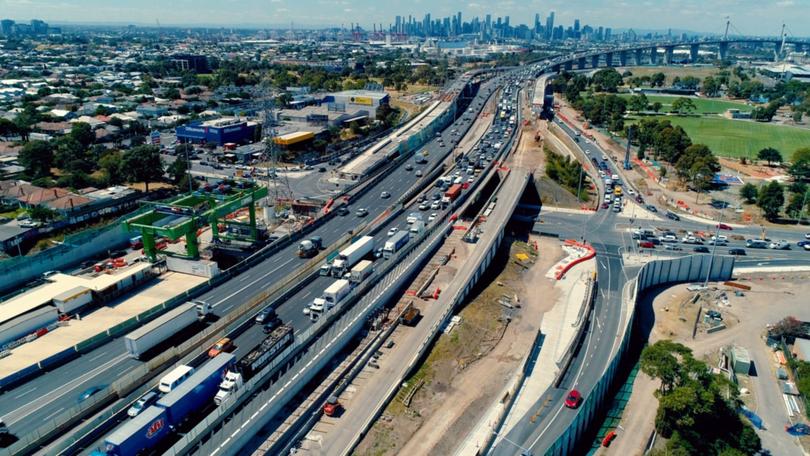Commonwealth Bank says public infrastructure work is dominating the construction sector

Public infrastructure is increasingly dominating the national construction market, a spending surge likely adding to inflation pressure and worker shortages.
The industry undertook more than $73 billion of work in the September quarter, according to the Australian Bureau of Statistics on Wednesday.
That was up 3 per cent on the same time last year.
Sign up to The Nightly's newsletters.
Get the first look at the digital newspaper, curated daily stories and breaking headlines delivered to your inbox.
By continuing you agree to our Terms and Privacy Policy.But government’s share of the spending has been growing, amid a debate about the role of a growing public sector in driving inflation.
“Large scale government infrastructure projects across the country are requiring significant engineering capacity,” Commonwealth Bank economist Harry Ottley said.
“Public sector engineering accounts for 48 per cent of works done in the quarter, the highest level since the early 2000’s.”
AMP economist My Bui said public infrastructure’s share of the economy was growing more rapidly than private sector works.
Ms Bui said that would add to economic growth — which was weak at just 1.5 per cent in the year to June — yet was also contributing to inflation.
“Over the medium term, that is inflationary,” she told The Nightly.
“We have a shortage of labour and (construction) materials in Australia.”
A fresh inflation pulse from the Australian Bureau of Statistics showed new home costs up 4.2 per cent for the year to October. It’s slowing but still higher than the Reserve Bank’s 3 per cent inflation target.
Construction costs were proving to be one of the stickiest items in the inflation basket, Ms Bui said. That means price rises have been stubborn and are not slowing as much as many other items, including healthcare and clothes.
“I’m inclined to think the Government should spread out these construction projects over a bigger period of time,” she said, freeing up workers and equipment to build new homes.
Last month, Deloitte declared the Federal Government’s pledge to build 1.2 million properties by 2030 is “slipping further out of reach”.
That was partly because the country’s immense pipeline of public infrastructure was sucking employees away from building houses and apartments.
But the new ABS data showed some positive signs for home-building.
Residential construction lifted 1.8 per cent in the September quarter, which Mr Ottley dubbed a “solid rise”. He said work on flats and apartments had lifted 4.1 per cent in the quarter.
“It is too early to report that the outlook has improved materially, or that bottlenecks have been solved, but it is a good sign for the industry and for the prospect of increasing the housing and rental stock,” he said.
A big pipeline of work on flats and apartments had been held up because of questions over viability and the worker shortage, Mr Ottley said.
